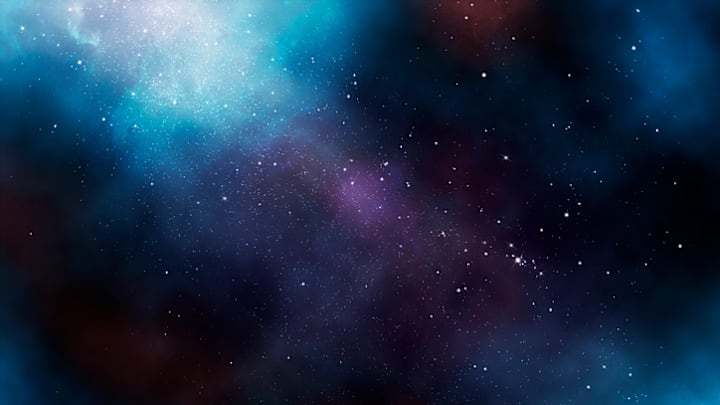If you look closely at the night sky, you'll notice that stars come in a variety of shapes and sizes. In addition to white, which is the most prevalent color, stars also sparkle in shades of blue, red, and yellow. But no matter how many hours you spend looking through your telescope, you won't find a green star. This isn't because stars don't emit green light—our eyes just see something else.
Like a fire, stars look different when they burn at certain temperatures. The "coolest" stars appear red while the hottest stars seem to burn in blue hues. But no star shines in a single color. At any given moment, stars emit varying light wavelengths that represent different parts of the color spectrum. Our eyes can't perceive all these wavelengths separately, however. Instead, whichever light wavelength is most dominant is the color we see. If the wavelengths of a star were plotted on a chart, they would make a bell-shaped curve, with cooler stars peaking at red on one side of the graph and hotter stars peaking at blue on the other end.

So where do green stars fit in? Stars of medium heat mostly emit green photons, but they don't appear green. The curve of their light chart peaks at the green wavelength, which falls in the middle of the color spectrum. That means these stars emit enough photons at the surrounding wavelengths to affect their perceived color. When we see something generating that many green, blue, red, and yellow photons at once, we process it as white. That's why mid-temperature stars like our sun appear white. The color doesn't mean something is super hot or bright—it actually means the star is average.
Purple is another color you won't see in the night sky. This is because our eyes are better at perceiving blue than purple, and stars that emit purple light also emit a lot of blue light (the neighboring color on the spectrum).
To learn more about what makes stars shine, read these facts about our solar system's sun.
Have you got a Big Question you'd like us to answer? If so, let us know by emailing us at bigquestions@mentalfloss.com.
